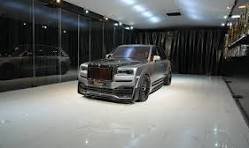Stylish: A Comprehensive Exploration of Its Meaning, Importance, and Impact Across Different Sectors
The concept of being “stylish” is deeply ingrained in many aspects of modern life, encompassing fashion, design, architecture, personal grooming, and even attitudes. From clothing choices to the way individuals present themselves, the idea of style is a powerful means of expression and a reflection of personality, cultural influences, and even societal trends. But beyond mere appearance, “stylish” carries deeper implications, influencing industries, perceptions, and lifestyles.
In this comprehensive article, we will explore the meaning of stylish, how it affects various sectors, why it matters, and how it has evolved in different contexts over time. We will also examine how style intersects with other factors, such as functionality and individuality, and why it continues to play a central role in modern culture.

What Does It Mean to Be Stylish?
Table of Contents
At its core, being stylish refers to the ability to create a pleasing, aesthetically attractive, and often unique appearance or experience. It’s about having a refined sense of taste and an appreciation for design, color, texture, and proportion. It can refer to the way a person dresses, the way they decorate their home, the way they design a website, or the way they approach problem-solving.
Being stylish is not about following trends blindly or mimicking others; rather, it’s about expressing oneself in a way that feels authentic, polished, and confident. Stylishness can emerge from a wide range of influences, from classic elegance to avant-garde experimentation, and it often reflects broader cultural or societal movements.
While style is subjective, the common thread that binds it is the ability to create a harmonious and pleasing look or experience, often with attention to detail, creativity, and a sense of individuality.
The Evolution of Stylishness in Fashion
Fashion is perhaps the most visible and dynamic expression of style, and throughout history, different time periods, social movements, and cultural shifts have significantly influenced what it means to be stylish. From the extravagant gowns of the 18th century to the minimalist fashion of the 21st century, what’s considered stylish has undergone constant evolution.
- The Early Years: Class and Elegance In the early 20th century, style was closely tied to class and social status. The concept of stylishness was often about refinement, wealth, and social position. The wealthy elite were the trendsetters, and clothing, accessories, and manners were all designed to showcase status. Tailored suits, high-end materials, and opulent fabrics were the hallmark of style during this period.
- The Mid-Century: The Rise of Casual Chic The mid-20th century saw a shift toward more casual yet elegant styles. With the advent of ready-to-wear clothing and mass production, fashion became more accessible to a broader audience. Iconic figures like Audrey Hepburn, James Dean, and Marilyn Monroe popularized a relaxed, understated approach to style that still conveyed sophistication. Simple lines, bold accessories, and an emphasis on comfort marked the era.
- The 1980s-1990s: Bold and Experimental The late 20th century brought with it a wave of bold experimentation and excess. Fashion became more diverse, and personal expression became a central theme. Designers like Vivienne Westwood, Jean-Paul Gaultier, and Tom Ford revolutionized fashion with daring, unconventional designs. The rise of streetwear also redefined stylishness, as young people embraced the influence of hip-hop, skate culture, and punk rock.
- The 2000s-Present: Individuality and Sustainability In the modern era, the concept of stylishness has become increasingly individualized. With the rise of social media and digital influencers, style has become a personal brand for many, with the ability to mix and match influences from various cultures, subcultures, and eras. Sustainability also plays a larger role in what is considered stylish, as consumers become more conscientious about eco-friendly fashion choices and ethical sourcing.
Stylishness in Interior Design
While style is most commonly associated with fashion, it also plays a vital role in interior design. Stylish interior design focuses on creating spaces that are both functional and aesthetically pleasing, reflecting the tastes and lifestyles of those who inhabit them. Just like fashion, interior design trends evolve over time, shaped by cultural movements, technological advances, and environmental considerations.
- The Early 20th Century: Classic Elegance In the early 1900s, stylish interior design was defined by opulence and grandeur. The Art Nouveau and Art Deco movements were highly influential, introducing decorative motifs, geometric shapes, and luxurious materials like velvet, silk, and marble. Homes were designed to impress, with intricate details and attention to symmetry and balance.
- The Mid-Century Modern Movement: Minimalism and Functionality Post-World War II, the mid-century modern design aesthetic gained popularity, with a focus on clean lines, functionality, and simplicity. Furniture was sleek and practical, and the interiors were designed to promote openness and light. Iconic designers like Charles and Ray Eames, and Florence Knoll, emphasized minimalist, functional design that married form and function.
- The 21st Century: Sustainable and Eclectic In the 21st century, stylish interior design has become more eclectic and diverse. Open floor plans, smart home technologies, and a mix of global influences have shaped modern homes. Sustainability and eco-friendliness have also become central to stylish interior design, with a growing demand for materials that are both attractive and environmentally responsible.
The Role of Stylishness in Architecture
Just as fashion and interior design focus on visual appeal and comfort, architecture also thrives on style. Architectural style defines the character of a building, often communicating the values, history, and purpose behind its design. From ancient structures to modern skyscrapers, the concept of stylish architecture has been at the forefront of cultural and societal development.
- Classical Architecture: Symmetry and Proportion Classical architecture, with its emphasis on symmetry, proportion, and harmony, has been a defining feature of stylish buildings for centuries. Structures like the Parthenon in Athens and the Roman Colosseum are prime examples of how stylishness was not only about aesthetics but also about engineering and cultural expression.
- Modern Architecture: Function Meets Form In the 20th century, modern architecture broke away from classical traditions, embracing new materials like steel, glass, and concrete. Figures like Le Corbusier and Frank Lloyd Wright focused on clean lines, open spaces, and minimalism. Stylishness in modern architecture was as much about function as form, with an emphasis on designs that served a purpose while also appearing sleek and innovative.
- Contemporary Architecture: Innovation and Sustainability Today’s stylish buildings continue to reflect innovation and progress, incorporating sustainable building practices and cutting-edge technology. From eco-friendly skyscrapers to environmentally-conscious residential homes, the modern architect’s goal is to marry style with sustainability, creating buildings that are both visually striking and environmentally responsible.
Stylishness in Other Sectors
- Automobiles The automotive industry is another sector where stylishness plays a critical role. A stylish car isn’t just about good looks; it’s about creating a seamless blend of form, function, and performance. Car manufacturers, from luxury brands like Ferrari and Rolls-Royce to more everyday options like BMW and Audi, recognize that stylish design can influence a buyer’s choice. The sleek lines, bold colors, and innovative materials used in cars are all aimed at creating an experience that resonates with style-conscious consumers.
- Technology and Gadgets With the rise of smartphones, smartwatches, and other consumer electronics, stylishness has become an important aspect of product design. Companies like Apple, Samsung, and Sony have demonstrated that sleek, minimalist, and user-friendly design is just as important as functionality. Stylish gadgets combine aesthetics with cutting-edge technology, offering consumers products that are both useful and visually appealing.
- Personal Grooming Stylishness extends beyond clothing and décor and into personal grooming. Haircuts, makeup, and skincare routines all play a role in the overall perception of style. Stylish grooming is often about presenting oneself with confidence and attention to detail, whether through a carefully chosen hairstyle, a well-groomed beard, or a polished, radiant complexion.
- Food and Dining In recent years, food presentation has also become an important element of style. Chefs and home cooks alike take great care in the way dishes are plated, using colors, textures, and arrangements to create visually stunning meals. Stylish dining experiences, whether in restaurants or at home, emphasize the visual appeal of the food as much as its taste.
Why Stylishness Matters
- Expression of Identity Style is a powerful form of self-expression. Whether through clothing, home décor, or the way we communicate, our style reflects who we are, our values, and our personality. It allows individuals to make statements about their uniqueness, creativity, and individuality.
- Cultural Influence Stylishness is often a reflection of broader cultural trends and societal shifts. Fashion, design, and architecture continuously evolve to reflect changing attitudes, technological advancements, and global events. Stylishness can serve as a snapshot of a particular moment in history, capturing the spirit of the times.
- Confidence and Impact When someone is stylish, they often feel more confident and empowered. A well-curated personal style can positively impact a person’s self-esteem, influence how others perceive them, and even affect their social and professional opportunities.
- Social Connection Style creates common ground for people to connect. Whether it’s through a shared interest in fashion, a particular design aesthetic, or appreciation for a cultural movement, stylishness can foster communities and relationships based on mutual admiration and understanding.
Conclusion: The Timeless Nature of Stylishness
Stylishness, in its many forms, continues to be a central element of human expression and culture. Whether in fashion, design, technology, or personal presentation, the desire to be stylish reflects our innate need to communicate who we are, what we value, and how we interact with the world around us. As trends evolve and new technologies emerge, stylishness will undoubtedly continue to shape our aesthetic preferences and how we present ourselves, both to others and to ourselves.
Ultimately, being stylish is about finding a balance between creativity, individuality, and functionality—creating something that is both visually appealing and meaningful. As the world continues to change, the definition of stylishness may shift, but its importance in shaping culture, identity, and society will remain ever-relevant.








Post Comment